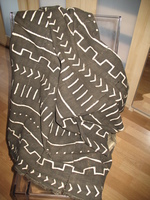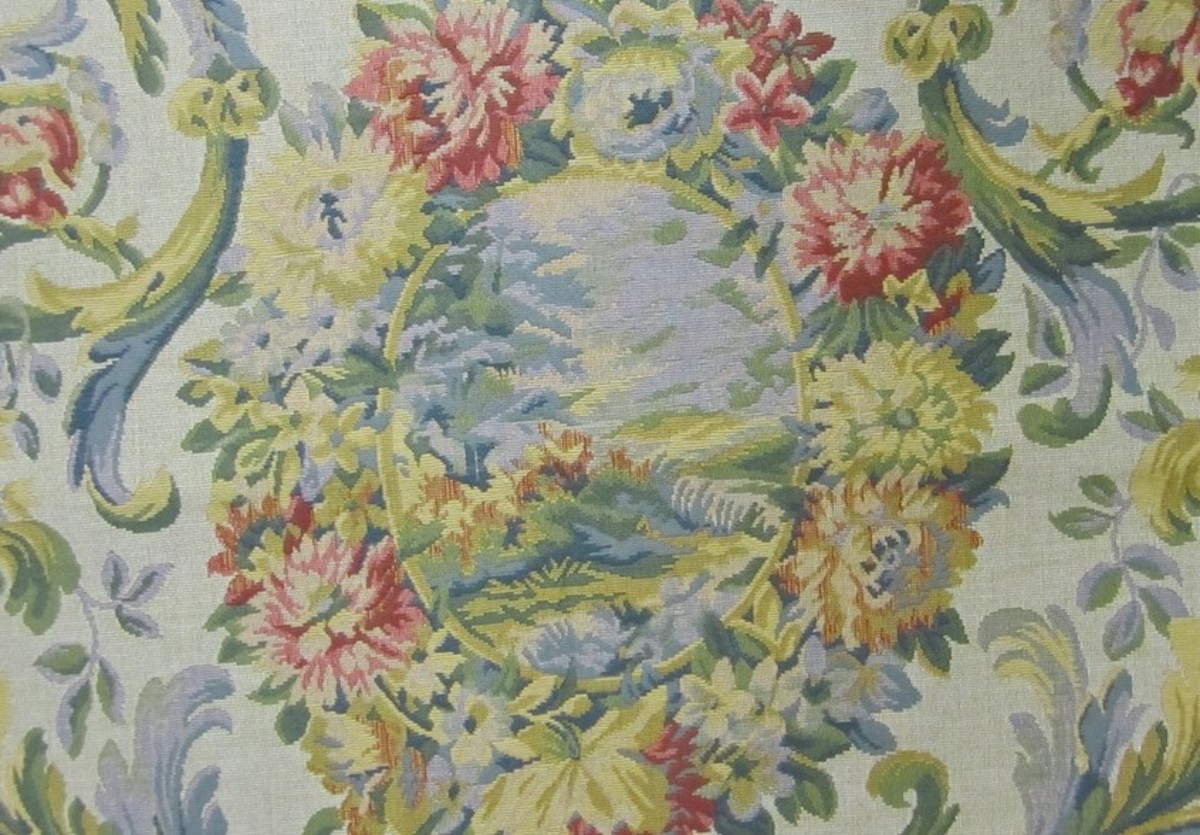- HubPages»
- Home and Garden»
- Home Decorating»
- Interior Design & Decor
The Mudcloth Fabric - Is It Really Made Using Mud?
Mudcloth

The African Textile Known as Mudcloth
Yes, authentic mudcloth is actually made using mud in the process. This process is hundreds of years old and dates back to the 12th century AD. Mudcloth is made into a variety of patterns and colors and one of the most popular is my fabric in the photo (see photo).
My friend was getting ready to travel and gave me the fabric that she purchased while in Mali. Mali is where mudcloth originated. In Mali mudcloth is known as bogolanfini. Bogo translates into the word "mud" and lan translates into the words "traces of."
The Famous Fabled City in Mali
Mudcloth is a handmade traditional fabric made in Mali. Mali is a West African country partially in the Sahara Desert. While Bamako is the capital city the most famous city is Timbuktu. Timbuktu is believed to have been founded near the end of the 5th century.
As a child I always heard references made to Timbuktu and many people thought it was only a fantasy city - a city of fables. It was also considered to be at the end of the world and a popular saying, when referring to great distances, was "From here to Timbuktu."
The Popular Threat to Children: While I was pretty much a goody two-shoes, many other children heard threats about being kicked from here to Timbuktu!
The Traditional Process
- In the traditional process, women spin raw local cotton into yarn. Men then weave the yarn into plain white strips of cloth. Next the cloth strips are sewn together. The cloth is then preshrunk by being washed and left to dry in the sun. The women then take the dry cloth and dye and decorate it using mud and various leaves.
- Next the cloth is soaked in a brown solution made from different trees causing it to turn bright yellow. Again it is left in the sun to naturally dry.
- When dry the women artists decorate the fabric with various designs that are usually copies of every day objects. Mud is used once again when the artists use a fermented mud dye to outline the patterns. It is actually the background on the fabric that is painted onto the cloth and not the designs. The designs are outlined and left unpainted.
- The cloth is washed once again resulting in a fabric with a black background and patterns that stand out in yellow - this is a very slow process and may have to be done a number of times. Finally, the artists use a caustic solution that is applied only to the yellow (patterns) of the fabric which turn the patterns brown. The fabric is once again left in the sun which naturally bleaches the brown areas a shade of white. (see photo)
The fabric is beautiful and distinctive. But the cost has many designers opting for the new process so they can get fabric quickly, in abundance and at less cost.
The New Method
- Mudcloth made using the new and quicker method is made with simpler designs, a simplified dying technique and an overall less complicated process as compared to the traditional method.
- Cotton is collected and again the men weave the plain white cloth into white strips of fabric. This time instead of the men hand-sewing the fabric together it is done by machine. River mud is collected and the villagers still provide the leaves used to make dye. The mud is no longer allowed to slowly ferment - instead the women quickly cook the mud. The mud dye is then used to decorate the fabric but pre-cut stencils are often used.
- Some mudcloth sold on the market is simply a printed pattern.
How to Tell if the Fabric You Purchase is the Real Deal
- There are many factory-produced mudcloth pieces in a wide range of colors, but the authentic fabric only comes from Mali. Comparing my cloth to the factory-produced there is just no comparison between appearances. It is easy for me to see the difference. It even feels different.
- anything factory produced has that very even appearance all over the fabric. Real mudcloth does not have that even appearance.
- real mudcloth has an uneven weave and depending on the yarn used it may be kind of smooth to rough. Mine is somewhere in between.
- the black background color of authentic mudcloth is not an even black all over.
- real mudcloth is never sold off a long bolt of fabric - it is sold in pieces and not by the yard. .
What Do the Symbols Mean?
The symbols can be abstract depictions of common items in the village. Some of the symbols may represent events or famous people. Some of the popular designs include cowry shells, tree leaves or flowers as well as Mali itself. An artist may cover the entire piece of mudcloth with a single repeating pattern.
How Did I Use My Fabric?
- My intention was to rush home with the mudcloth and make a jacket or maybe a vest or a cap or a small purse. Years later and I have done nothing because I knew I would ruin the fabric if I took scissors to it. So it has remained intact. However, I did use it one bitterly cold day.
- On that bitterly cold day I had to wait for a bus to go to work. The wind chill made it fell like it was near zero. Just how many layers could I wear and still walk and function? When I looked at my piece of mudcloth draped nicely over a chair I thought I would try it as a shawl over my coat - and it worked beautifully and kept me warm.
- Even though the fabric is cotton it is so well woven that wind was not able to whip through it. I was able to stand at the bus stop and survive.
---------------------------------
One reason genuine mudcloth has become so popular is the desire for more natural fabrics. Mudcloth is made from locally grown cotton and natural dyes are used. It is also handmade as opposed to being factory-made giving it a unique and individual appearance.
For more information about other natural fabrics - wool and linen, see the links below.
Using Natural Fabrics
Do you prefer to use natural fabrics?
Natural Fabrics and Their Amazing Benefits
- The Healthy Benefits of Pure Wool Fabrics
Did you know that wool fabric is highly flame-resistant? This is why it is so often used to make clothes for firefighters and soldiers. Wool also has antibacterial properties, is resistant to dirt, and has many other benefits, making it a fabric of c - Benefits of Pure Linen Sheets: 8 Reasons to Love Them
Pure linen bed sheets have many healthy benefits, such as stimulating blood flow. They are far superior to other sheets on the market and can even last up to 20 years. For some odd reason, manufacturers are allowed to use the term "linen" for all typ






